With spring coming here in Kansas, bird life is picking up exponentially as each day passes.
I like birds! I find them extraordinarily beautiful (even the plain ones) and highly amusing. Even though I’m not a devoted twitcher, I love to watch birds, and occasionally, I’ll even go to pretty good lengths to see particular birds in their natural environments.
With all this in mind, I thought that this new book, Embroidered Birds and Their Habitats by Judy Wilford, would be a good candidate to kick off a series of book reviews. It’s one in a stack of books that I’ve been planning to share with you for a while, so … here we go!
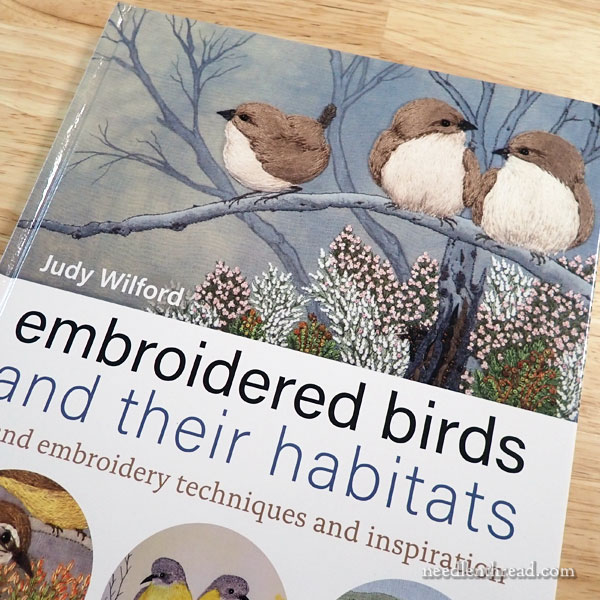
Embroidered Birds and Their Habitats captures my interest primarily because of the habitats in the title.
When I first read through the book, in fact, I had a hard time seeing it as a book of “hand embroidery techniques and inspiration.” To me, it is much more of a textile art book that focuses on the process of building a whole work of textile art. It’s not as highly instructive in the embroidery sense as most embroidery books.
But that’s not to say it isn’t highly instructive! It definitely is – but just not in the same sense as most hand embroidery technique books.
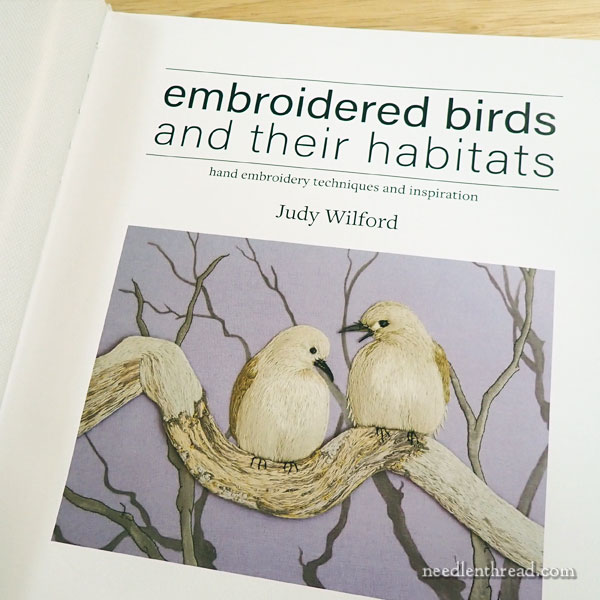
In the book, the author takes her reader through the whole creation of a habitat and the birds that go in it.
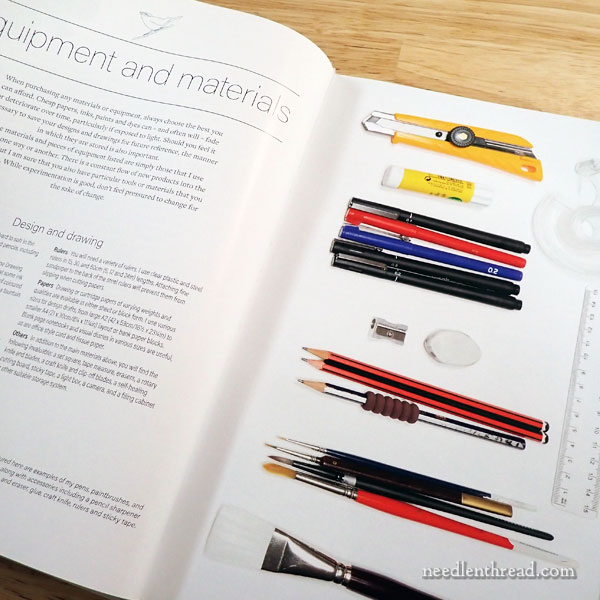
In the beginning of the book, where we learn about the materials and supplies that the author uses, you can see that this is no ordinary embroidery book – or at least, not just embroidery.
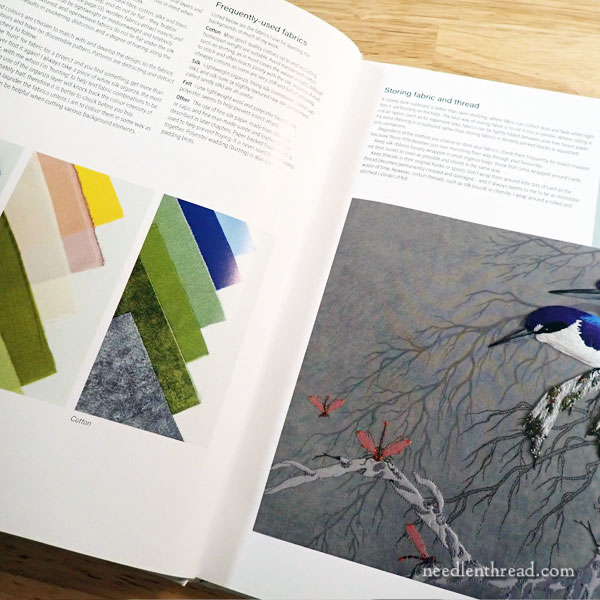
Whenever I see a supply list that includes art supplies, brushes, cutters, a lovely array of textures and color in fabric, and the like, I know I’m in for an adventure! I know that the book is going to do more than simply say, “Here is a design and this is how you stitch it in fabric and thread.”
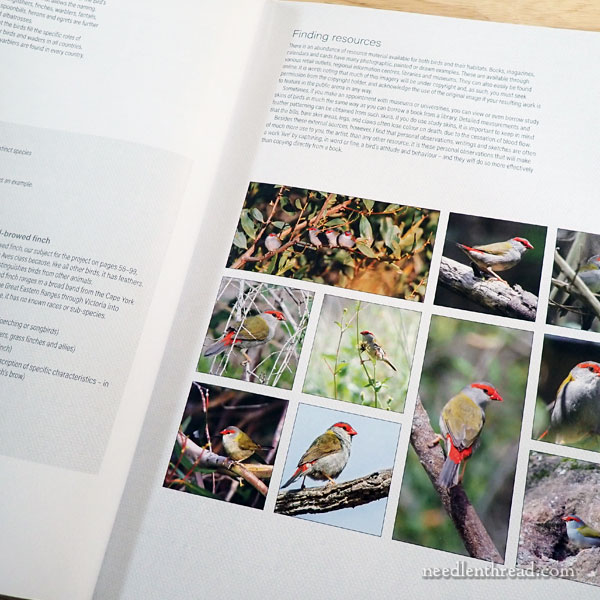
And it does!
Judy gets the reader to observe birds in their habitats, to look at them in their natural settings, almost in the sense of a field guide.
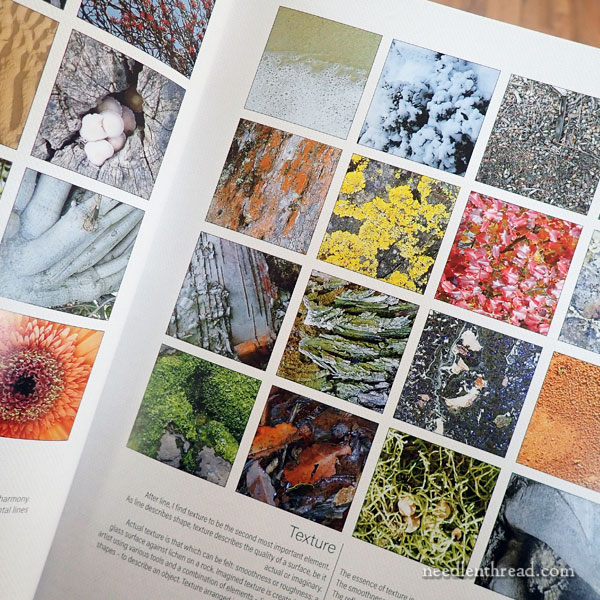
She helps the reader see the details – like the endless variety of textures and colors that permeate the natural world.
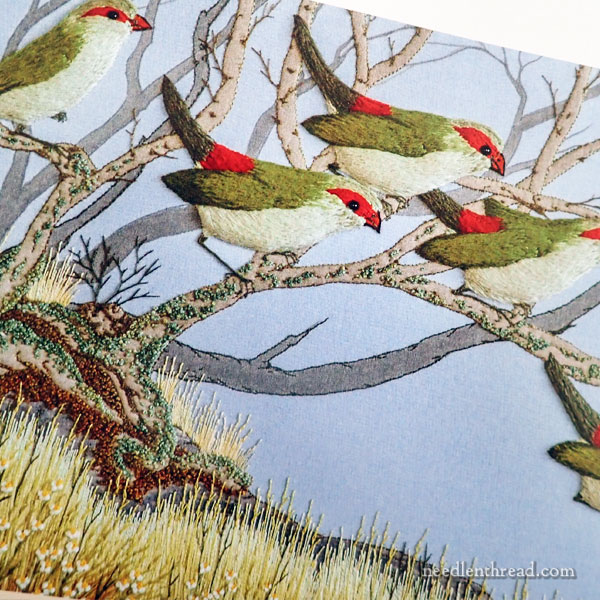
And then, of course, she demonstrates how to translate what we observe into these layered illustrations created from fabric and thread.
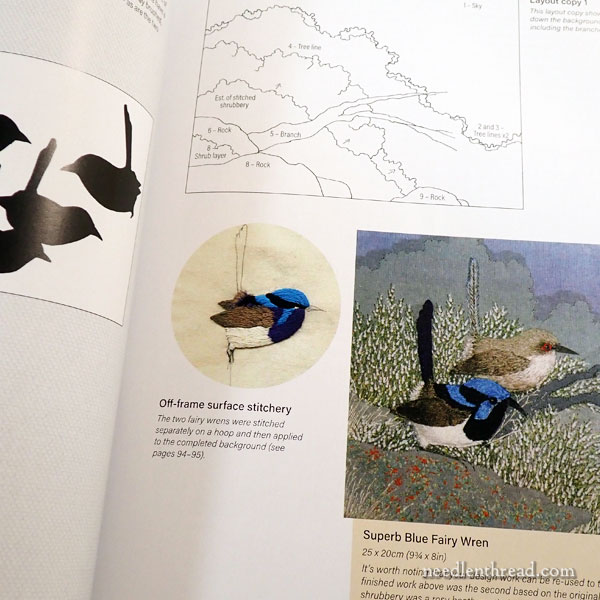
The book covers the author’s process really well, and makes that process accessible to anyone who is interested in building multi-layered textile projects.
One of her approaches includes what she calls off-frame stitchery. This is embroidery that is worked on a separate hoop and then applied onto the frame as one of the many layers that builds the picture. This appliqué process is used in all kinds of needlework, but it works exceptionally well in these layered pieces because it helps evoke the depth and dimension of the environment.
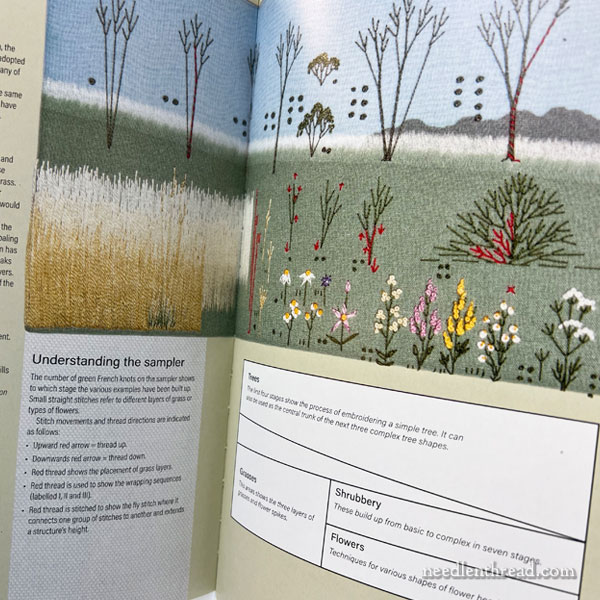
In the embroidery section of the book, there’s this fabulous sampler approach to learning how to stitch the different elements that you might see in a bird’s environment.
From grasses to shrubbery to trees and flowers, you see how to build the scene and deck it out. I really like this section of the book a lot! I think it would be useful to anyone who wants to embroidery scenery, wide vistas, or even homes and gardens. It gives you a sense of placement, size, variety, texture – and how to see it all together in one view.
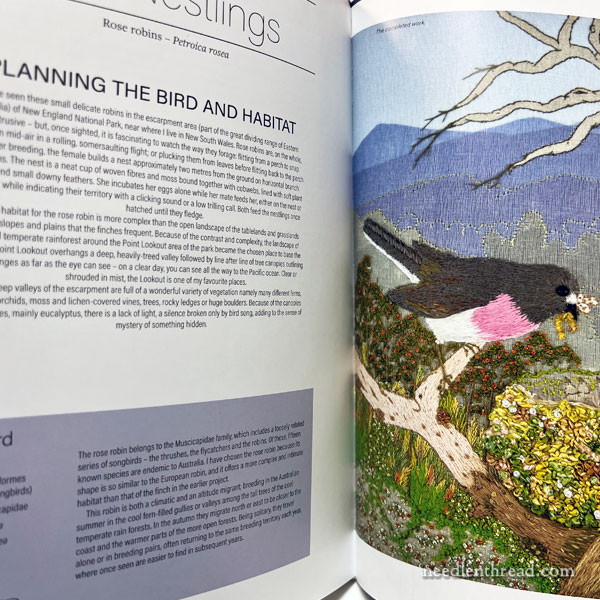
Of course, the book has projects in it, with materials lists and instructions for creating and finishing different scenes.
In the back of the book, you’ll find instructions on how to prepare and finish your works for display, a stitch dictionary, and a lovely gallery of the author’s works for further inspiration.
In a Nutshell
I think this is a wonderful book for embroiderers and mixed media textile enthusiasts.
I really enjoyed reading the whole book from cover to cover. I loved seeing Judy’s creative process.
More than anything, though, I think that Embroidered Birds and Their Habitats makes this type of scenic textile art doable to those who might see it as complex. I know I’ve often looked in wonder at this type of art and thought it would be too complicated for me to enjoy doing it. This book completely turned my head around on that notion! She makes the techniques super accessible.
Finally, after reading the book, I found myself much more attuned to what I was seeing in the environment around me. Now, when I look at birds – even if they’re on my feeders – I find myself looking beyond the birds. I notice better the places the birds are hanging out in. I notice more about the bushes they’re in, the shapes of the twigs, the buds and leaves. I notice the ground and its multiple textures and shades of color. And I find myself thinking in layers.
Inspiration!
I just can’t help adding this picture below. Last year, my brother (who took the photo) and I went exploring out at Tuttle Creek, a reservoir here in Northeast Kansas. In the trees and foliage surrounding the west side of the reservoir above the dam, each year there’s a fabulously active colony of painted buntings.
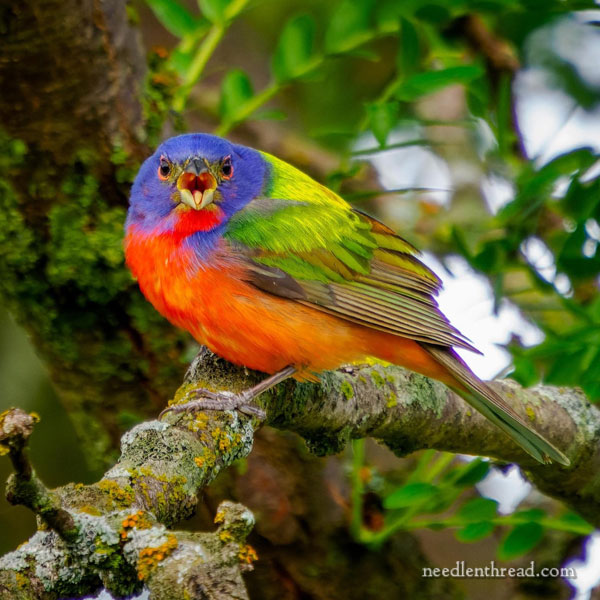
Every time I see these gloriously colorful little birds, I think I’d like to embroider one!
I could imagine taking the techniques that Judy covers in this book – with the reservoir in the background and the foliage that skirts the lake – and combining them with Trish Burr’s approach to needlepainted birds, to bring these little frantically colorful painted buntings to life with fabric and thread.
But that is another project for another time!
Where to Find It
You can find Embroidered Birds and Their Habitats available through Amazon. You’ll find it listed here on my Amazon Recommendations list.
If you’re looking for more in-depth reviews of embroidery books to add to your library for reference and for inspiration, feel free to browse through the many book reviews that I’ve written here on Needle ‘n Thread! You never know – you may find just the book you’ve been looking for all your life! 🙂
This post contains an affiliate link to my Amazon Recommendations Page, which means that any purchases made through that link may result in a small commission at no extra expense to you.







Mary, your reviews are so helpful! When you have to order them online, it really helps to see and in-depth preview of what’s in them. You really make every book seem like a “must buy”!
Oh, how I want this book!!! I noticed she stitched a Superb Blue Fairy Wren, isn’t that a fabulous name for a bird! Not just a Fairy wren, but A SUPERB, blue Fairy Wren. I love it. I know there are also Splendid Fairy Wrens too. Alas we don’t have them here in Texas. But we do have your painted bunting.
I do more of the textile art, layering than straight embroidery. It’s now in my cart on Amazon.
Great review!—that’s actually how I first came across your website. I was looking for a review on a book. I think I shall have to add this one to my list. 🙂 Thanks!
Sadly Judy Wilford died last December. Her lovely books will leave a lasting legacy of her embroidery work.
The short video clips on stiches help alot
and I Love the embroidered birds
Which of Trish Burr’s books do you think (at least today, anyway! 🙂 ) has the best approach to needlepainted birds?
I think her book, Needle Painting Embroidery: Fresh Ideas for Beginners is a great place to start. She has some birds in there, and if you’re new to doing birds, it’s a good level to start with.
What a marvelous book!
I, too, have been greatly inspired by birds in both real-world and spiritual encounters.
I have reasonably extensive fiber background, but am primarily a coopper enamelist and writer.
Currently, I have an antique (100+ years old) box of Hem7nway embroidery silks for which I would LOVE to find a home/use.
One may contact me at this email, if interested or if you have a bright id3a for them.